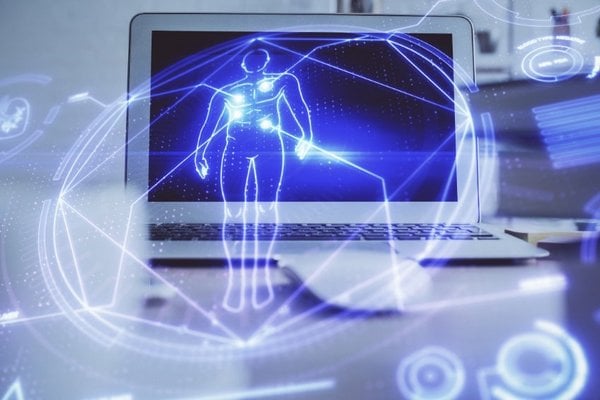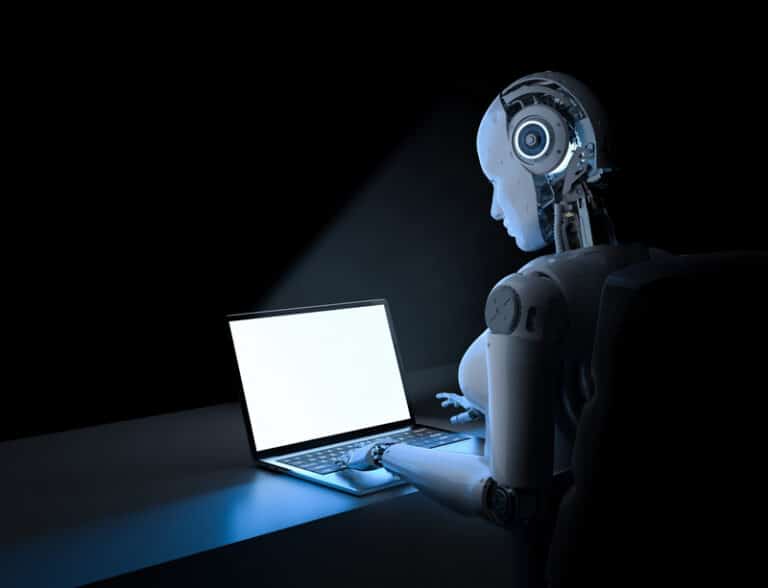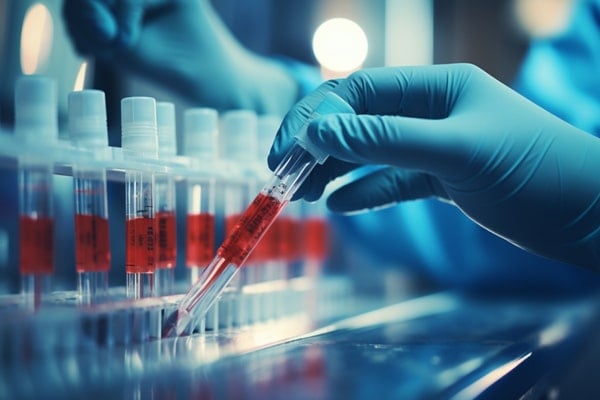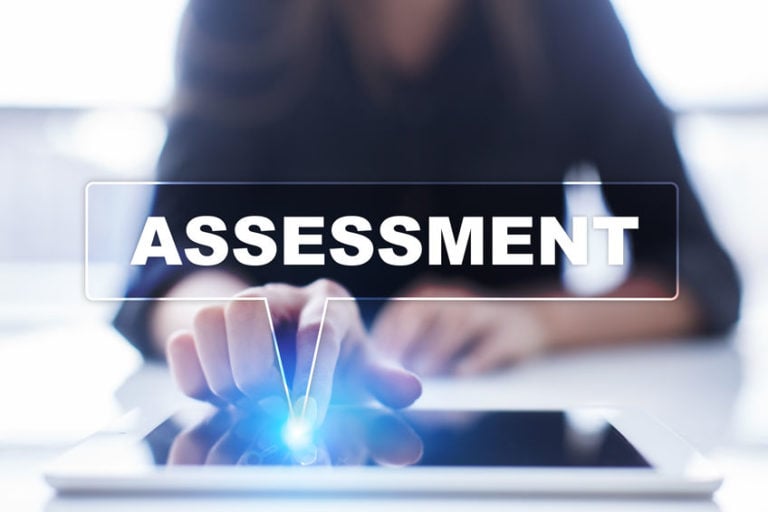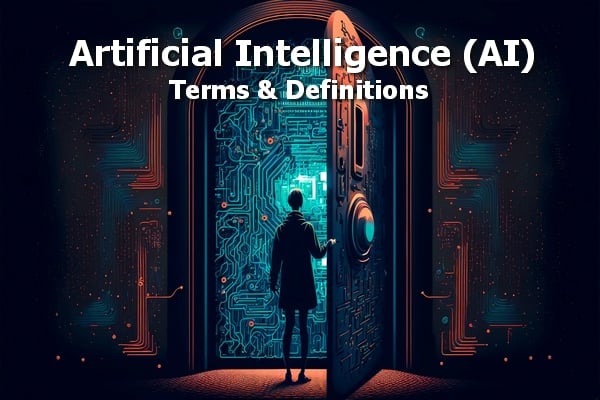Top 10 AI Trends in the Life Sciences Industry
Artificial Intelligence in the Medical Device Industry (Part 2). This article describes AI trends #6 through #10 of the Top 10 Artificial Intelligence use trends in the life sciences. It provides an overview of AI use trends in the Medical Device Industry & for quality control).
Read Part 1: Top 10 AI trends in the pharmaceutical industry/life science sectors and why AI won’t necessarily displace personnel, but will require different skill sets.
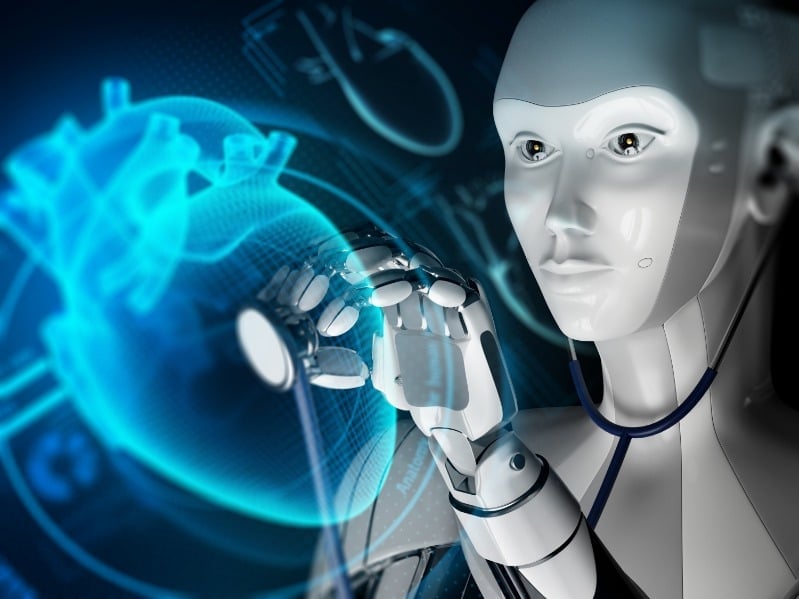
Artificial Intelligence in the Medical Device Industry
Artificial Intelligence (AI) is coming of age. The use of Artificial Intelligence in the Medical Device industry has skyrocketed in recent years. Its expansion throughout the sector coincides with advances in DNA research and automated manufacturing capacities.
Artificial intelligence takes healthcare/life science technologies to a more sophisticated level, but it comes at a cost. Here’s why investing in life science AI technologies pays off over the longer term.
Common artificial intelligence (AI) applications in the life sciences sectors include:
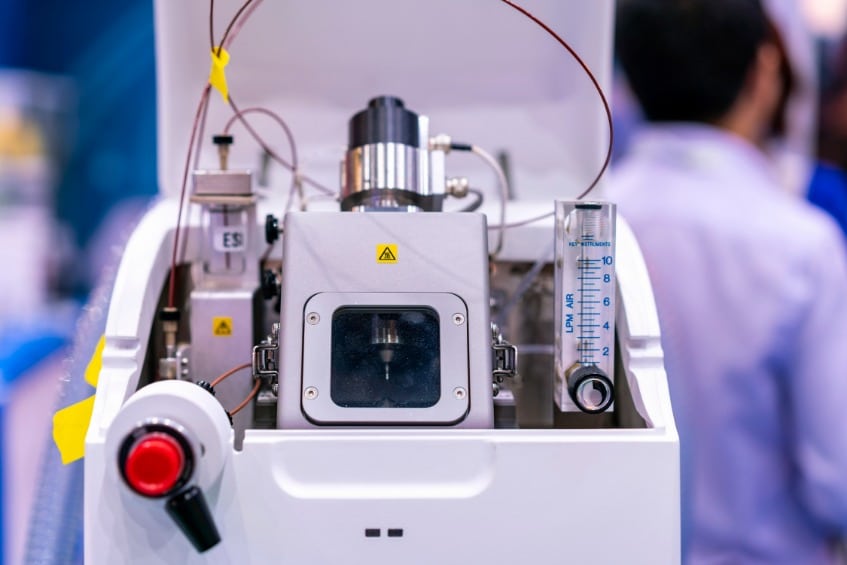
Other examples of AI use trends in the life science sectors were listed in Part 1 (Top 10 AI Use Trends) of this 2-part series.
Overall, the use of Artificial Intelligence in the Medical Device & Pharmaceutical Industries is one of the fastest-growing Pharma 4.0 manufacturing trends.
Yet AI technologies remain in their relative infancy compared to what these technologies will eventually provide in the life sciences sectors, including innovations related to:
- High-tech devices to reduce Parkinson’s tremors
- New robotic surgical interventions
- 3D printing and joint/organ replacement technologies
- Bio-physiological evaluations & neurological systems monitoring
- Replacement limbs
- Donor matching
- Gene editing
- Other AI healthcare applications and precision medicines/precision dosing
New applications for Artificial Intelligence (AI), combined with other advanced technologies such as DNA/pharmacogenetics, means personalised medicine is expected to reach new heights over several decades. In manufacturing sectors, AI will continue to enable faster drug development & medical device development processes, improve supply chain management/logistics planning capacities, and reduce product defects & production waste.
The transition won’t occur overnight, however. Key barriers to AI adoption must still be overcome.
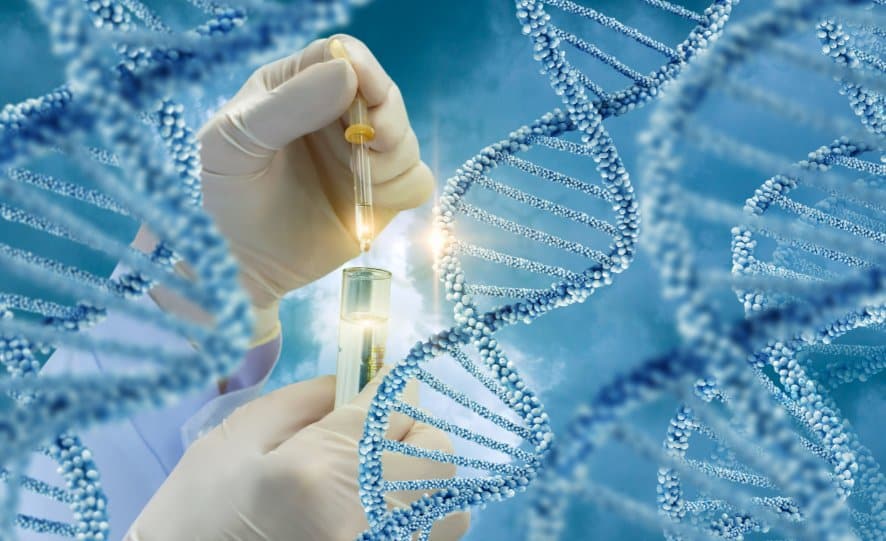
Common barriers to AI adoption in life sciences & manufacturing sectors
AI system resources and costs
- Initial AI investment costs (budget constraints)
- Personnel training & AI talent requirements when deploying AI technologies
- Integration with/replacement of existing equipment & processors with more AI capable systems
- Shortages of AI-savvy engineers/IT personnel in a competitive market for industry talent
AI RESISTANCE (CULTURE)
- Lack of familiarity with data integrity regulations and software risk management strategies (i.e. dealing with ever-increasing cybersecurity risks)
- Government & public perceptions of Artificial Intelligence (AI) use in medical settings
- Cultural hesitation (industry resistance)
- Manufacturer confusion about evolving technologies
GxP COMPLIANCE REQUIREMENTs FOR COMPUTERISED SYSTEmS
- Privacy laws, HIPAA, etc.
- Reluctance for DNA testing (e.g., costs, insurance repercussions)
- Risks of DNA data stored on cloud-based systems
- GxP Data Integrity requirements
- Quality Management System and GxP compliance requirements, e.g.:
Before we examine the top AI use trends, and how AI will impact the medical device manufacturing sector in particular, what do the terms ‘personalised medicine’ or ‘precision medicine’ actually mean?
Definition of Personalised Medicine (Precision Medicine)
Personalised medicine is also referred to as ‘precision medicine’ or individualised medicine, and it means exactly that – patient-centric medicine (healthcare). Personalised medicine is a form of healthcare (medical care) that collects and analyses a patient’s individual data when designing and administering treatment regimes for illnesses, cancers, deformities, or genetic conditions. Personalised medicine means determining which of the currently available pharmacological treatments, dosing regimes, surgical interventions, and/or medical devices will best meet the patient’s unique needs & genetic profile.
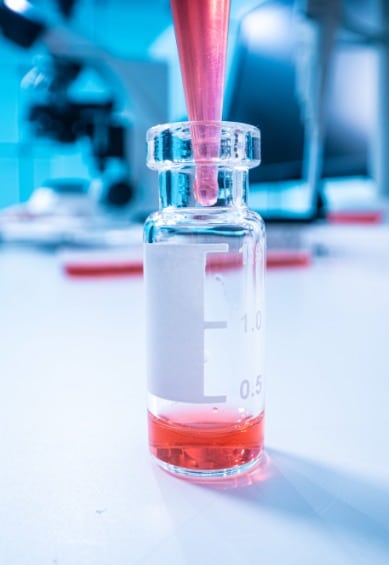
Personalised medicine encompasses a variety of life science technologies, e.g. pharmacogenetics, gene editing, 3D printing of replacement joints/bones, prescribing/dosing adjustments based on DNA analysis, and other advanced medicinal therapies.
The opposite of a personalised medicine approach is treating medical conditions & illnesses with a somewhat ‘generic approach’, equivalent to the ‘one size/one dosing regime fits all’ model of healthcare. This has long been the downfall of traditional healthcare and drug development practices – because it fails to account for a patient’s unique DNA & physiological structures.
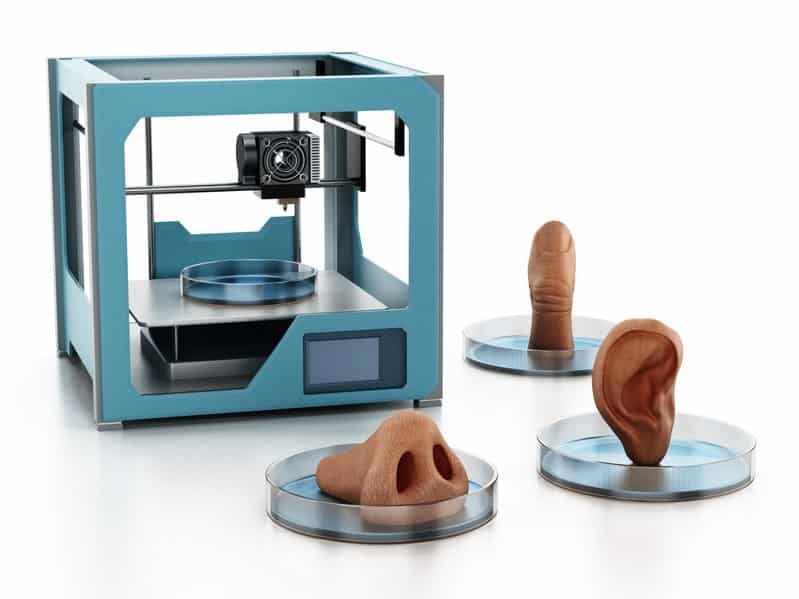
Taking a “‘one size fits all” approach means pharmaceutical industry products & medical devices will generally be well suited for treating a majority of patients with the same condition(s) – but not all patients will benefit. Additionally, some could be harmed.
In contrast, a precision treatment approach – driven by AI life science technologies – can provide more effective treatments, quicker recovery periods, and improved mobility after traumatic injuries. Precision medicine generally requires DNA studies and/or sophisticated scanning/modelling of a patient’s anatomy before selecting a treatment.
While this can lead to higher medical care costs on the front end in terms of testing or imaging requirements, the long-term savings (including from preventing unnecessary or ineffective treatments/surgeries) are worth noting by Public Health experts, Government Officials, and medical insurance companies. Additionally, in a world of widespread medical personnel shortages, AI-driven technologies can reduce staffing burdens by pinpointing the most effective treatments early in the patient’s healthcare timeframes.
Artificial Intelligence: medical devices & pharmaceuticals
Personalised healthcare incorporating artificial intelligence technologies has been proven to enable:
- Higher rates of diagnostic accuracy
- Faster diagnostic reports
- Reduced trial-and-error when selecting from available treatments/surgical interventions or medical devices
- AI can also reduce the stress of practitioner burnout and improve healthcare access in rural areas
While a precision medicine approaches require greater upfront investments of time, costs, and training, it pays off in the longer run by helping docors treat medical conditions more effectively from the start. Precision approaches also reduce painful & costly delays, such as related to trailling several different medicines or medical devices (an issue contributing to supply chain shortages), and help alleviate diseases/limitations that would otherwise remain intractable for longer (reducing the number of sick days/disability days and reducing economic impacts of illness in society).
Top 10 Uses of AI in the Life Sciences Sector (Part 2)
Artificial Intelligence in the Medical Device Industry
Life Sciences AI Trend #6 – Cloud-based services and design collaborations
Medical Device Industry: Cloud-based systems & pre-pipeline collaborations

The #6 AI trend relating to artificial intelligence (AI) in the medical device industry is for increased use of cloud-based enterprise systems for functions such as product development (medical device designs), collaborations between Academics & Manufacturers, technology transfer projects, data analysis, and supplier management. (Click here for Life Sciences AI Trends #1 to #5)
Examples include:
- Product design and engineering collaborations
- AI-produced prototypes
- Decentralised clinical trials
- Remote monitoring of medical devices and equipment
- Remotely performed equipment maintenance/software updates
- Cloud-based medical device quality management system components
- Remote auditing of non-local suppliers
- Cybersecurity/data integrity monitoring
AI Challenges/New Requirements:
- Ensuring equipment specifications & software updates remain consistent across the enterprise, including with collaborative universities
- Integrations with existing systems and data sets
- Reliable internet speeds
- Adequate processing capacity
- Personnel/end-user training
- Power demands and material costs
- Power-hungry software
- Shortage of precious metals/materials used to manufacture medical devices
- Cybersecurity & data security (IP protection)
Learn more about medical device design processes.
Life Sciences AI Trend #7 – Warehousing & Distribution: Supply Chain Logistics
Medical Device Industry: Ordering, storage, & transport logistics
The #7 AI trend for use of artificial intelligence in the medical device & pharmaceutical sectors is the use of AI in supply chain management. AI use continues to increase across logistics functions, from automated component ordering to medical device/batch tracing and AI-aided delivery systems, to serialisation tracking for the prevention of theft & counterfeits.
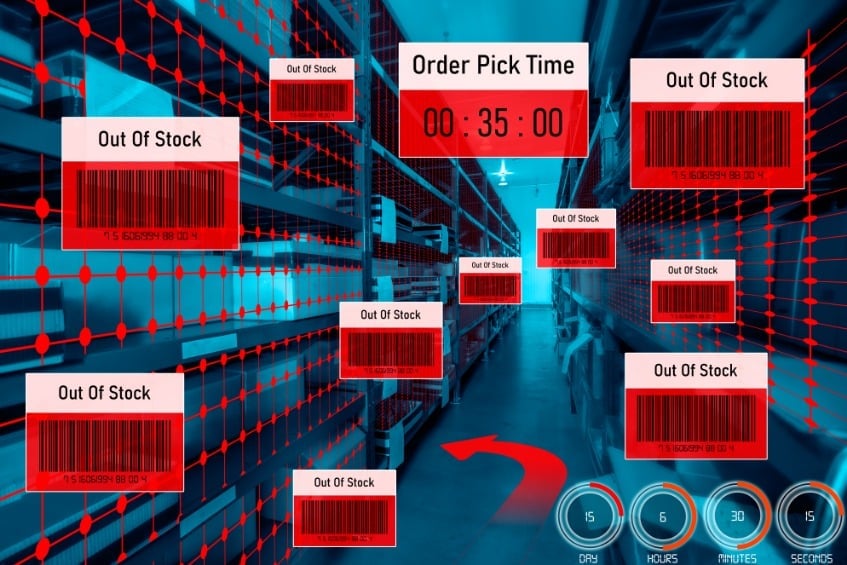
Examples include:
- Automatic ordering of raw materials or product components (lean manufacturing)
- Packaging & labelling (serialisation), AI-generated shipping documents
- Increased traceability of medical device products throughout the supply chain
- Rapid communication of adverse events/counterfeits/product shortages
- Rapid identification of location(s) of impacted products including implanted devices
- Medical device UDIs
- Integration of key Medical Device databases (e.g. EUDAMED)
- AI-aided recalls of medical devices/pharmaceutical products
AI Challenges/New Requirements:
- Connectivity issues
- Unpredictable material shortages
- Scanner equipment and power sources
- Changes in transport routes due to travel bans/border conflicts/etc.
- Product security assurances over multi-country distribution routes
- Cybersecurity & data security (IP protection)
Life Sciences AI Trend #8 – Injection Molding Technologies & Surgical Robotics
Artificial Intelligence in the Medical Device industry – Injection Molding Processes and Robotics
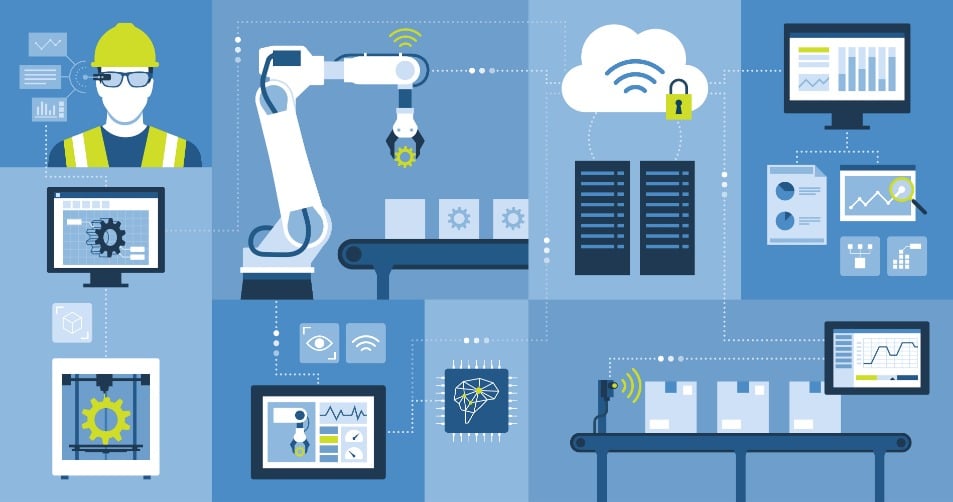
The #8 AI trend relating to artificial intelligence (AI) in the life sciences & manufacturing industry relates to injection molding processes. Along with automated injection molding processes, AI-driven robotics for medical device manufacturing and surgical interventions are becoming more prevalent.
Examples include:
- Automatic monitoring and adjustment of temperature and timing to prevent common issues with injection moulding (residual stress, warping, ‘sink’ marks)
- Material control during micro-molding and injection molding
- Examples: “2K, two-shot, multi-component injection molding/co-injection“, where AI production combines two or more individual materials into a fully bonded, robust medical device component
- AI-driven robotics for manufacturing and/or surgical interventions (particularly intricate operations on gastrointestinal systems, neurological systems, brain tumours, etc.)
AI Challenges/New Requirements:
- System designs/engineering challenges
- Innovation costs/equipment costs (implementation budgets)
- Defect scanning equipment/cameras
- Materials analysis expertise
- Smaller batch sizes and shorter product life cycles
- Prohibitive expenses for the smaller medical-device manufacturing companies that make up a majority of medical device manufacturers
- Movements to reduce single-use plastics and toxic resins
Life Sciences AI Trend #9 – Diagnostic Algorithms and Radiology Scan Reports
AI in the Medical Device Industry: Radiology images and diagnostics
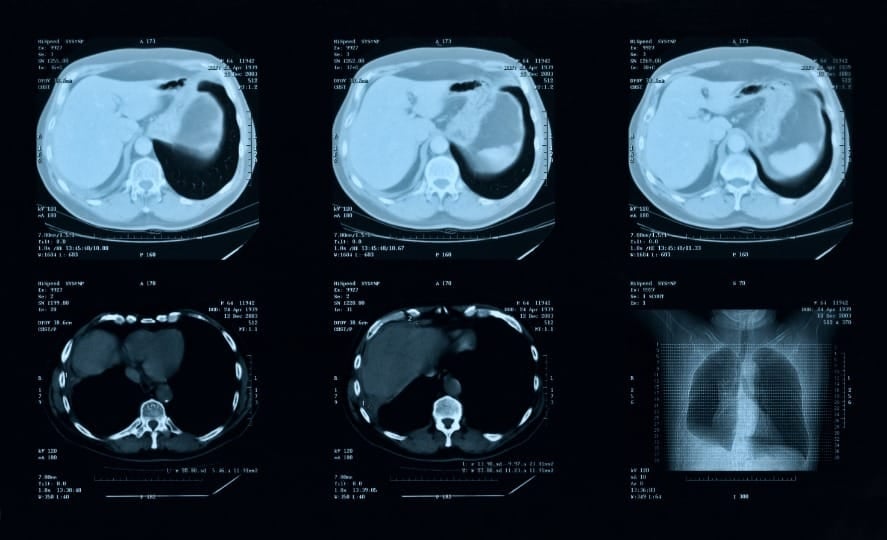
The #9 AI trend relating to artificial intelligence (AI) in the life sciences & manufacturing industry relates to the increased use of AI in radiology departments to improve diagnostic accuracy and reduce reporting times.
“AI [Artificial Intelligence] excels at recognizing complex patterns in imaging data and can provide a quantitative assessment in an automated fashion. More accurate and reproducible radiology assessments can then be made when AI is integrated into the clinical workflow as a tool to assist physicians.” Source: Artificial intelligence in radiology (Hosny, Parmar, et al).
Examples include:
- Fracture classifications
- AI-guided radiology/imaging & diagnostics (one study revealed a 19% increase in diagnostic accuracy when Radiologists employed AI technologies)
- Reduced risk of incorrect diagnosis
- AI-guided surgeries/AI vision computers
- Tissue preservation/minimally invasive surgeries via AI-driven modelling/surgical instruments, etc).
AI Challenges/New Requirements:
- The variability of human physiology (validation challenges)
- Developing appropriate risk management strategies
- Legal ramifications/cost of insurance
- SaMD – Software as a Medical Device regulations/compliance
- Personnel Training/AI deployment training in highly variable medical settings
- Access to high-quality scan equipment and software in:
- Rural communities
- Developing countries
- Smaller medical centres
Life Sciences AI Trend #10 – Precision Prosthetics, Wearable Sensors & AI-Aided Drug Delivery Devices
Medical Device Industry AI: Precision prosthetics, wearable sensors, innovative drug delivery devices, home-use IVDs
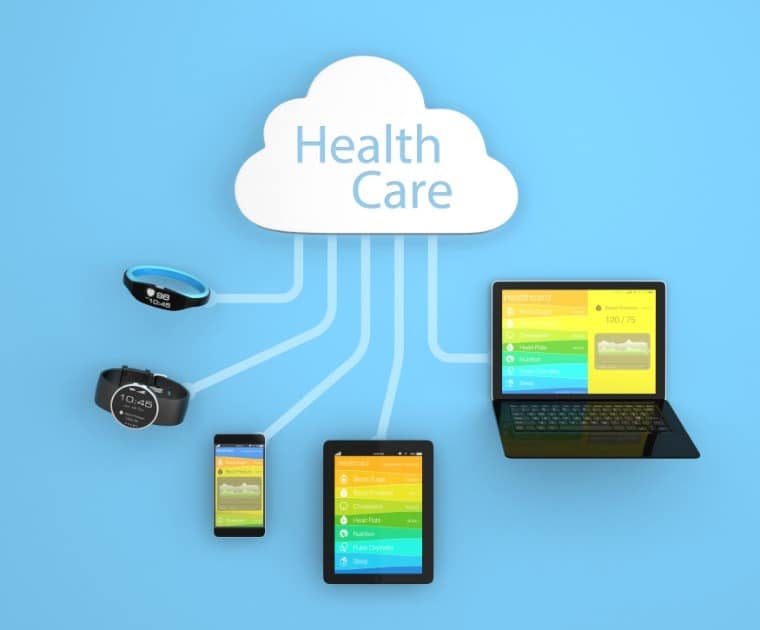
The #10 AI trend relating to artificial intelligence (AI) in the life sciences & manufacturing industry relates to its use in precision medicines & personalised healthcare. This AI-use trend features new medicine delivery methods including wearable monitoring devices/alarms, AI monitored implants/interconnected monitoring alarms, implanted insulin pumps, home-based diagnostic kits/IVDs, and AI-driven dosing/drug delivery technologies.
Examples include:
- Precision dosing based on:
- Implanted/wearable sensors (e.g. insulin level sensors/alarms, insulin pumps)
- Automated drug delivery systems, e.g. implanted or transdermal drug-release devices
- Precision prosthetics for replacement joints (hips, knees, limbs, etc.)
- Programmable cardiovascular equipment/pacemakers
- 3D printing of orthopedic medical devices to match patient’s anatomy
- Donor matching based on DNA analysis
- Larger databases
- Highly sophisticated algorithms
- Spray-on transdermal drug delivery systems (spray-on films/medicines), etc.
AI Challenges/New Requirements:
- High-tech sensors (power sources, potential failure rates)
- Raw materials/precious metal shortages: supplier issues & higher manufacturing expenses
- Medical equipment waste management
- Environmental considerations for plastics use/single-use devices
- Sustainable manufacturing
- Manufacturing of smaller components for medical devices
- Robust qualification and validation processes
- Patient education/end-user training
- New medical devices
- AI-driven prosthetics
References & Further Reading
Peer-reviewed Journal Articles: Use of Artificial Intelligence in the Medical Device Industry
Artificial intelligence in radiology
Journal: Nat Rev Cancer. 2018 Aug;18(8):500-510 (2018). DOI: 10.1038/s41568-018-0016-5.
Authors: Hosny A, Parmar C, Quackenbush J, Schwartz LH, Aerts HJWL.
AI Based Injection Molding Process for Consistent Product Quality
Journal: Procedia Manufacturing, Volume 28, Pp. 102-106 (2019).
Authors: Hong Seok Parka, Dang Xuan Phuong, Saurabh Kumarc.
Insulin dose optimization using an automated artificial intelligence-based decision support system in youths with type 1 diabetes
Journal: Nature Medicine (Nat Med) 26, Pp. 1380–1384 (2020).
DOI: 10.1038/s41591-020-1045-7.
Authors: Nimri, R., Battelino, T., Laffel, L.M. et al.
Next-generation robotics in gastrointestinal surgery
Journal: Nat Rev Gastroenterol Hepatol 17, 430–440 (2020). DOI: 10.1038/s41575-020-0290-z.
Authors: Kinross, J.M., Mason, S.E., Mylonas, G. et al.
A Surgeon’s Guide to Artificial Intelligence-Driven Predictive Models
Journal: The American Surgeon (2022). DOI: 10.1177/00031348221103648.
Authors: Hassan AM, Rajesh A, Asaad M, et al.
Artificial intelligence-based computer vision in surgery: Recent advances and future perspectives
Journal: Ann Gastroenterol Surg. (2021) Oct 8;6(1):29-36. DOI: 10.1002/ags3.12513.
Authors: Kitaguchi D, Takeshita N, Hasegawa H, Ito M.
Artificial Intelligence: Present and Future Potential for Solid Organ Transplantation
Journal: Transplant International. (2022) Jul 4;35:10640. DOI: 10.3389/ti.2022.10640.
Authors: Peloso A, Moeckli B, Delaune V, Oldani G, Andres A, Compagnon P.
MAYO CLINIC review of Robotics Surgery
Accessed online on November 22, 2022.
For assistance with GxP compliance requirements, visit PharmOut’s expert GxP Consultants and our online GxP compliance training for computerised systems.
Medical Device Regulatory Compliance & Computerised Systems Resources
- Annex 11 – Computerised Systems requirements (GMP compliance)
- ISO 13485: Quality Management Systems for Medical Devices (ISO 13485:2019)
- ISO 14971: Medical Devices – Application of Risk Management (ISO 14971:2019)
- Recall readiness (recall training in relation to therapeutic goods)
- Complaints management (complaints handling, consumer feedback on therapeutic goods, complaints management regulations, etc.)
- EU Medical Device Regulations (MDR)
- EU Annex 21: Importation of Medicinal Products into the EU
Last updated on November 28th, 2022 at 07:39 am

